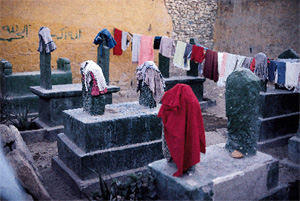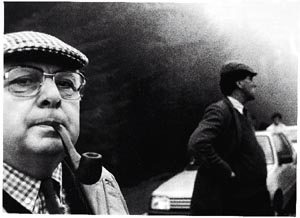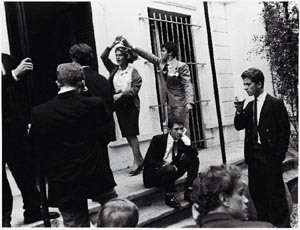
Image: Stephen Cohen Gallery
CAIRO | City of the Dead
Enrico Ferorelli
Cairo’s urban sprawl first spilled into the city’s vast, ancient cemeteries more than 50 years ago. Today they are home to a vibrant squatter community of approximately 500,000. The bustle of an informal economy — machine shops, glassblowers, coffee shops — thrives alongside mausoleums dating back to the eighth century. The government tolerates this improvised urbanization and provides the more densely populated areas with basic services, including water for laundry.

FRANCE | Survivors of the Aristocracy
Lauren Greenfield

The French aristocracy was supposed to have died with the Revolution. But according to the Association of French Nobility, there are still some 3,500 noble families in France. Although most aristocrats now have to work to maintain their châteaus, noble trappings — such as the hare hunt (above) and exclusive social gatherings, or rallyes (below) — have survived. In the words of one count: “The French nobility represents values that are disappearing…in the Western world. You have to find something higher than materialism and consumerism.” — Tim Dickinson

Photos (French aristocracy) courtesy of Stephen Cohen Gallery














